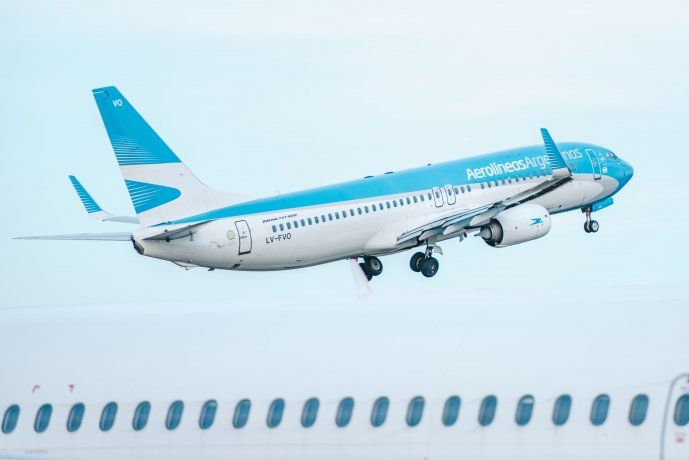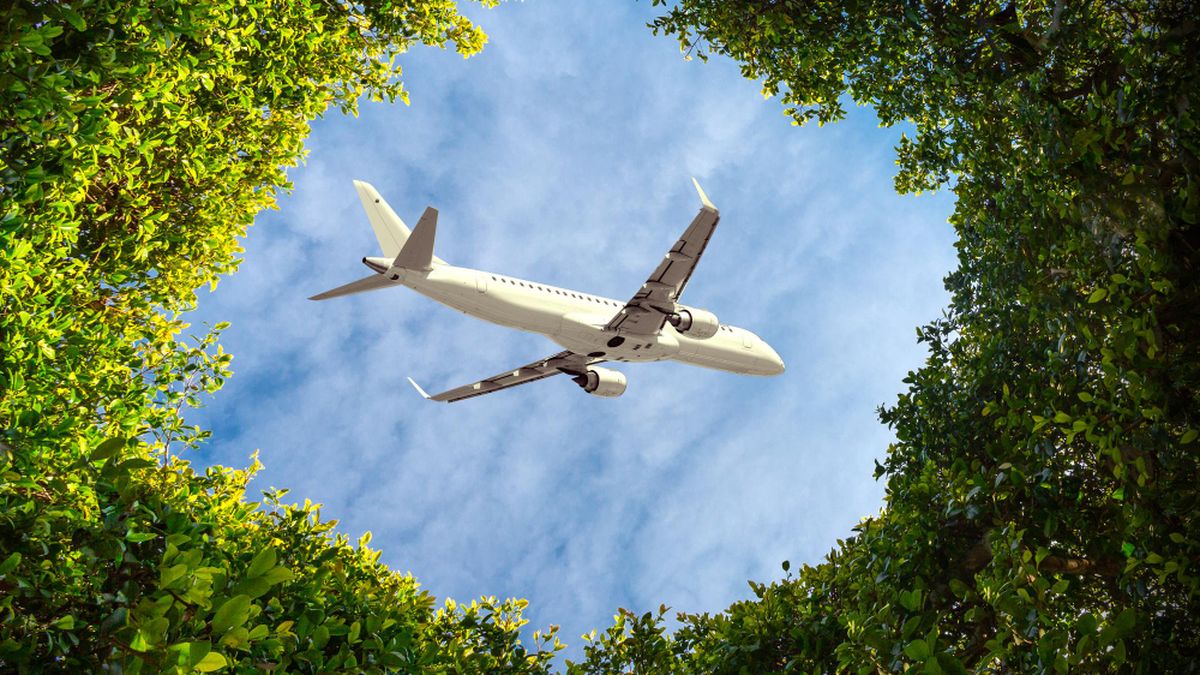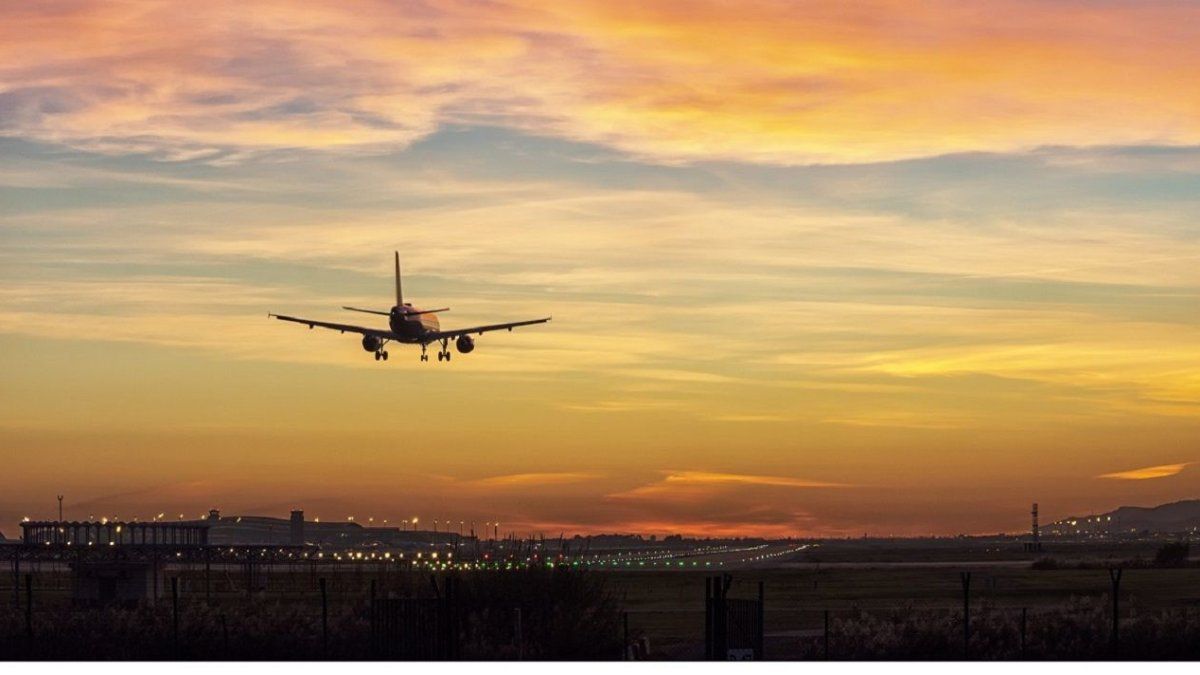EVOLUTION OF THE CARBON FOOTPRINT IN AIRLINES.JPG
Airlines committed to a schedule to reach zero emissions by 2050.
In this context, one of the most common strategies is fleet modernizationthis is investing in buying state-of-the-art aircraft that consume less fuel. Se trata de aeronaves fabricadas con materiales compuestos que las hacen más livianas y que cuentan con motores de alta tecnología que optimizan el consumo.
Lufthansa, Delta and Singapore Airlines are some of the airlines that added “green” models to their fleets, such as the Boeing 787 Dreamliner and the Airbus A350. These aircraft, according to their manufacturers, They are 20% to 25% more efficient in terms of fuel consumption per seat.
At this point, in the last three administrations (from 2017 to the present) Argentine Airlines Boeing 737 Max.
The last one arrived in mid-2024 and thus the national company that has the auction flag It has 12 aircraft of this typeon a fleet of 86 aircraft. The average age of the fleet is 11.1 years.
imply a reduction in the noise footprint of 40%.
It’s about airplanes with values around US$100 millionwhich companies can buy directly or through leasing systems, which influences the total amount of the operation.
The trend towards the use of sustainable fuels for aviation
Another action that airlines that want to reduce their carbon footprint usually undertake is the use of sustainable aviation fuelsbetter known as SAF (Sustainable Aviation Fuel) by its acronym in English.
This resource became one of the main ways to reduce emissions. These fuels, derived from raw materials such as recycled oils, agricultural waste and algae, They can reduce CO2 emissions by up to 80% throughout their life cycle.
Companies like British Airways, KLM and United Airlines They have signed agreements to increase the supply and use of SAF in their operations.
In this segment, the American United Airlines takes the lead. In 2021 it made the first transatlantic flight 100% SAF poweredwhich was considered a milestone in the history of commercial air transportation.
KLM, for example, leads initiatives in Europe to integrate the SAF into its short and medium distance flights.
Turkish Airlines It received the award for the most sustainable flag airline at the World Finance 2024, for the third consecutive year. Ahmet Bolat, presidente del Consejo de Administración destacó: “En línea con nuestro compromiso de convertirnos en una aerolínea carbono neutral para 2050, incorporamos el uso de combustible de aviación sostenible (SAF) a nuestros planes de mitigación del cambio climático en 2022 y desde entonces We have further expanded its use on new routes from 2023. Seguiremos añadiendo nuevas rutas a nuestra red impulsada por SAF para perseguir nuestro compromiso de tener prácticas sustentables en todas nuestras operaciones”.
Argentine Airlines made its first flight with SAF fuel in September 2023 on the route from Madrid to Buenos Aires. But the aircraft was carrying a fuel mixture with only 2% of SAF, as the objective was to carry out performance tests.
The company’s plan is that, from 2027
The use of fuels is considered as one of the four pillars of the joint strategy of the aviation industry to contribute to the goal of zero emissions. Junto con la innovación tecnológica en las aeronaves, la lista se completa con mejoras en la gestión del tránsito aéreo y en las operaciones en tierra.
Optimization of routes and airline operations
Operational efficiency also plays a crucial role. Airlines have started implement fuel-efficient flight techniquessuch as continuous ascent and descent, and the use of optimized routes through advanced navigation systems.
Emirates and Qatar Airways These are two cases of airlines that stood out for their results in operational efficiency.
In that same line of action, Argentine Airlines
Some of the measures it adopted in this regard, according to its latest sustainability report, appear single engine shooting after landing; minimal use of reverse push in the landing maneuver; reduction of auxiliary power unit utilization during ground operation; implementación de descenso continuo with minimum thrust of the engines and flight planning using closer alternative airports when operating conditions permit.
ARGENTINE AIRLINES PLANES (3).jpg

The most efficient airplanes that Aerolíneas Argentinas has are the Boeing 737 Max, which reduce gas emissions by 50%.
In this sense, the incorporation of the Boeing 737 Max is also a fundamental contribution. The characteristics of these aircraft together allow for greater efficiency and optimization of the aircraft’s performance. .
Onshore energy use, investments and waste disposal
American Airlines has invested significantly in electric land fleets, while Scandinavian Airlines (SAS) is leading projects to fully electrify its base airports.
British Airways
Meanwhile, Air India
Argentine Airlines
LATAM Airlines
Qantas in which approximately 1,000 single-use plastic items were replaced with sustainable alternatives or eliminated entirely.
Despite technological advances, residual emissions are inevitable. To address this challenge, many airlines offer carbon.
EasyJetpor ejemplo, compensa el 100% de las emisiones de sus vuelos a través de proyectos certificados que incluyen la reforestación y el desarrollo de energías renovables. Air France, for its part, implemented a scheme that allows passengers to voluntarily contribute to compensation programs.
Air Canada has invested $6.75 million in Canadian climate solutions company Carbon Engineering (CE). Esta inversión está destinada a impulsar el avance de la revolucionaria tecnología de Captura Directa del Aire (DAC) de CE, diseñada para extraer dióxido de carbono directamente del aire a una escala sustancial e industrial.
Singapore Airlines
Among the solutions that look towards the future of commercial aviation, there are more sophisticated recipes. Airlines and manufacturers are betting on the future of electric and hydrogen aviation. Airbus Alaska Airlines collaborate with technology startups to explore on regional flights.
Source: Ambito
I am an author and journalist who has worked in the entertainment industry for over a decade. I currently work as a news editor at a major news website, and my focus is on covering the latest trends in entertainment. I also write occasional pieces for other outlets, and have authored two books about the entertainment industry.




